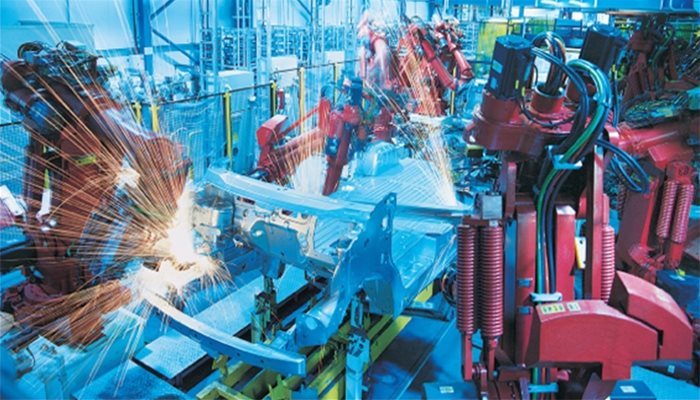TECHNOLOGY FOCUS
Technical publications but also commonly papers are amply of general information about sensors and typical applications (the instructor will recommend some good references). Unfortunately, beside of a block diagram they contain less information about the inner live namely measurand evaluation methods and electronics, implementation, etc. The major objective of this course is to “open” the sensors and to make the participants familiar and experienced with this knowledge deeply.
The practical course provides a comprehensive survey of the industrial sensors – in general – and of the relevant inductive sensor classes for industrial applications – in particular – from automotive use to machine tools and up to windmills, covering design, fabrication, implementation, principles, and functionality, but also – very important – specific standards and EMC requirements.


COURSE CONTENT
Each course chapter (one or more chapters per day) begins with classical, traditional solutions and gradually moves on to state-of-the-art analog and digital versions, including integrated circuits (ICs), application-specific integrated circuits (ASICs), large-scale integrated systems-on-chip, software-defined sensors (SDS), digital signal synthesis, coils on substrate, on silicon and active inductors, etc. It give an in-depth view of the possibilities and limitations of today and tomorrow.
The course employs step-by-step presentations and analyses of a great deal of implementations, starting with proven classical descriptions and ongoing with three-level evaluation methods. These include analytic computation, popular graphical methods (complex plane, phasor diagrams, phase plans, Smith charts) and computer-assisted tools, like the Maxwell electromagnetic field simulator and the popular Spice simulator for electronic circuits.
For traditional solutions, the chapters give overviews in tables with computation formulas. Numerical examples help the course participants consolidate the theoretical knowledge gained. Some of these cases will be simulated in real-time. Concrete examples for currently available commercial parts are provided.
The participants will receive a set of course notes. These notes are for participants only and are not for sale. In addition, they can use a comprehensive technical book elaborated by the instructor and recommended for this course.
WHO SHOULD ATTEND
The course addresses scientists and managers, professional engineers and technicians, as well as anyone who requires a solid basic knowledge of sensors for industrial applications.
The course is also accessible to students with a major in electrical engineering, electronics and/or physics.
The course provides managers and research people having related experience in industrial, governmental or academic institutions with a valuable update on the latest developments on the industrial sensor fields.
The course is developed to give an inside information to engineers and technicians who are active in the field of sensor applications and usage, and to give those the opportunity to learn more about the theoretical issues of these systems.
Basic knowledge, either theoretical or hands-on in electrical engineering, electronics and/or physics are preferred but not required. No detailed knowledge of electronic device physics is assumed.

Day 1
Course Overview
The course starts-up with a summary of the issues in order to give participants a preliminary general subject matters. A large part of the first day systematically treats the terms and definitions valid for the knowledge of sensors for industrial purposes.
Chapter 1. Basics of Industrial Sensors, Definition and Conventions
Class distinctions between sensor and transducer are explained using the most valid IEEE Sensor definition and block diagram. Various types of sensors (for contact or contactless detection, position versus displacement, linear or angular configuration, etc.) and also specific classification criteria are described.
Finally, specific for all industrial sensors main features are presented by means of world-wide accepted definitions and typical values:
- Supply Conditions and Limitations;
- Sensing range, Zero and Span, and Hysteresis;
- Sensitivity and Nonlinearity, Linearity Error;
- Accuracy – Resolution – Repeatability: three Precision Criterions ;
- Drift, Temperature Effects, and Temperature Ranges;
- Dynamic Specification, Response Time and Cut off Frequency, Turn on and Turn off Times;
- Output Types: Analog, Binary or Digital, Voltage or Current Outputs.
Chapter 2. Basic Standards, EMC/EMI, Safety, Reliability, and Availability
The essential specific product standards, namely the International Electrotechnical Commission Standards IEC 60947-5-2 and IEC 60947-5-7 are wide documents that need a time extensive study. The course gives a compact and exhaustive description of these standards parts:
- General Rules and Definitions;
- Operating Distances and Actuation Conditions;
- Differential Travel (Hysteresis);
- Switching Functions and Switching Output Types;
- Rated and Limiting Electrical Characteristics;
- Mechanical Specifications;
- Standard Codification of the Proximity Sensors;
- Verification of the Electromagnetic Compatibility;
- Final Overview of the Standard Specifications.
In addition, the course describes the following feature of the industrial sensors:
- Basic and Specific EMC/EMI Standards:
- Resilience against Electrostatic Discharges (ESD);
- Resilience against Radiated Electromagnetic Fields (RFI);
- Resilience against Fast Transients (EFT, Burst);
- Resilience against Impulse Voltage (Surge);
- Resilience against Common Mode Conducted Disturbances (CMCD);
- Magnetic Field Immunity Test (MFI);
- Immunity to Voltage Dips and Interruptions (VDI);
- Summary of the EMC Test Conditions for Inductive Proximity Sensors;
- Shock and Vibration Requirements;
- International Protection (IP) Classification;
- Intrinsic Safety, Product Safety Certification;
- Reliability and Availability:
- Mean time between failures, Mean time to failure. Failure Rate and Availability;
- Highly Accelerated Life Test (HALT).
Day 2
The target of the second day is a part witch refers to the inductive sensors in detail.
Chapter 3. Inductive Sensors (IS) – Definitions, Main Types, and Market Share
The class of inductive sensors is one of the large families in a top-ten ranking. The chapter gives a round view of this sensor family from the physical point of view up to market characteristics:
- Overview of the Sensor Classification;
- Specific Embedding of Inductive Sensors;
- Main Types of Inductive Sensors – Operating Principles and Benchmarking;
- Global IS Market – Size, Share, Growth, Trends and Forecast.
Chapter 4. Inductive Sensing Elements (ISE) – Evaluation Methods
How the sensing elements of the inductive sensors are realized and how they work is shown using the following methods:
- Analytical Methods of ISE;
- Measuring Methods to Evaluate the ISE;
- Modern Computer-Assisted Analysis and Synthesis of ISE.
Practical simulation examples follow the theoretical explanations.
Chapter 5. Inductive Sensing Elements – Practical Implementations
Starting with the description and the analytical computation of the traditional ISE embodiments, the chapter continues with more and more up-to-date versions:
- Fundamental Inductors – Solenoid and Toroid;
- Wire-Wound Coils with Air core;
- Wire-Wound Coils with Magnetic Core;
- Printed Flat Spiral Coils;
- Integrated Coils on Silicon Substrate;
- Active Inductors, Gyrators.
Chapter 6. Magnetic Materials for Cores/Plungers
A large majority of sensors uses magnetic cores and/or plungers. The chapter deals with the most popular materials and their properties, specifications, manufacturers and standardized shapes, etc.:
- Ferrites;
- Permaloy, Mu-Metals;
- Soft Iron-Alloys.
Day 3
At the course middle we make a jump from the functional and physical sensor domain to the electronic field, learning how the sensor inner life looks and which are its generations that has been developed during the last 70 years of the solid-state electronics existence. This part represents a major subject of the course.
Chapter 7. Evaluation Electronics of the IS
The instructor proposes an original good way to dives into this electronic sensor world based on a general functional block diagram which illustrates the generic structure of the sensor evaluation electronics.
This generic structure can be realized in different versions:
- IS with Discrete Evaluation Electronics;
- IS with Integrated Evaluation Electronics. Overview of the bipolar, MOS, CMOS integration technologies for sensor embodiments;
- ASIC (Application Specific Integrated Circuits) Implementations in the Evaluation Electronics for IS;
- Software Defined Sensor SDS - Vision or the Sensor of tomorrow.
Chapter 8. Driving and Evaluation of the ISE. Oscillators
The oscillator belongs to the core of an IS and needs a resonant circuit usually. To support the understanding of the various established oscillators the chapter debuts with general theories of the resonant circuits and of the oscillators, respectively and continues with oscillators descriptions:
- Theory of Resonant LC-Circuits (series vs. parallel);
- General Theory of the Oscillator;
- Convenient Types of LC-Oscillators for IS;
- Function Generators;
- Digitally Synthesized Function Generators.
Chapter 9. Signal Processing and Conditioning into Sensors for Industrial Applications
Independent of the physical measurand the sensor has to catch the primary quantity recorded by the sensing element and to perform a signal processing of this primary information. Finally, this signal processing chain provides an output information utilizable by the industrial application.
The major electronic stages involved in this procedure are deeply described (topology, operation, electronic implementation, etc.) in this chapter:
- Signal Amplifiers;
- Precision AC/DC Signal Converters;
- Sample-and-Hold Systems;
- Signal Linearization, Linearization Methods;
- Comparators, Windows Discriminators;
- Regenerative Comparators (Schmitt Trigger);
- Phase Locked Loop Circuits (PLLs);
- Digital-to-Analog (DAC) and Analog-to-Digital (ADC) Convertors.
Chapter 10. Output Signal Providing, Power Supply and Sensor Protections
The compatibility with the requirements of the industrial processes: supply voltages, signal types (voltage/current, analog/digital, etc.), values ranges of the sensor inputs and/or outputs, and protections against the harsh conditions (EMC and energetic) demands the existence of specific interface stages in the sensors:
- Output Stages for Analogue Sensors;
- Output Drivers for Digital Sensors;
- Monolithic Output Drivers Integrated in ASICs;
- Power Supply Circuits, Series and Shunt Voltage Regulators;
- Established Sensor Protection Functions (Open Wire Protection, Reversed Polarity Protection, Safety barrier against High-energetic SURGE-Pulses).
Day 4
Chapter 11. Industrial Sensors – Adjustment and Calibration
The large majority of industrial sensors needs a final calibration and – sometimes – additional adjustments during the normal operation. The chapter provides an evolutionary presentation of the sensor calibration starting with the classical methods and ending with the up-to-date procedures:
- Traditional Sensor Trimming Procedures with Commercial Components (trimmable resistors, Rejustor, classical potentiometers, digital potentiometers);
- Specific Programmable Electronic Devices used to calibrate industrial sensors.
Chapter 12. Industrial Sensors – Temperature Compensation
The major adjustment procedure, which is continuously performed during the sensor operation is the temperature compensation. An efficient compensation requires the permanent measuring of the sensor temperature. The chapter describes in a similar manner the levels of these challenging tasks:
- Temperature Sensing Devices;
- Theoretical Considerations regarding the Temperature Behavior of ISEs;
- Improvement of the Temperature Behavior by Passive Temperature Compensations;
- Active Analoge Hardware-Based Temperature Compensation Methods of ISs;
- Active Digital Temperature Compensation Methods of ISs.
Day 5
The last course day is reserved to the up-to-date attributes of sensor intelligence and to the networking of the sensors by means of dedicated standard networks.
Chapter 13. Intelligent Industrial Sensors – Networking
The presentation starts-up with the explanation of the terms: Sensor Networking and Intelligent Sensors:
- Basics of the Data Communication Systems;
- The ISO/OSI Seven-Layer Abstract Reference Model;
- Requirement Description for the Sensor and Actuator Communication Level;
- Intelligent Sensors, Diagnosis Features.
After this basics presentation, the course continues with the summary of the digital communication systems for several purposes. The majority of these communication networks has large industrial applications and is described in the technical publications elaborately.
For this reason the chapter 13 focuses on communication systems which are well-established for the networking on the sensor-actuator levels or are new and incoming for this interfacing and are to a lesser extent presented in the technical publications:
- RS-232, RS-422 and RS-484 Interfaces;
- Synchronous Serial Buses for Sensors;
- AS Interface.
- IO-Link – an Up-to-Date Sensor Communication System.
At the end of the course, a final recapitulation will summarize what we have learnt. Various sensor types and manufacturers will be illustrated. A considerably selection list with recommended references will be provided to the participants.
Dr. Fericean has published a text that is a recommended reference. The reference is not required for this course.
Inductive Sensors for Industrial Applications (Artech House, 2019) ISBN: 9781630812553

